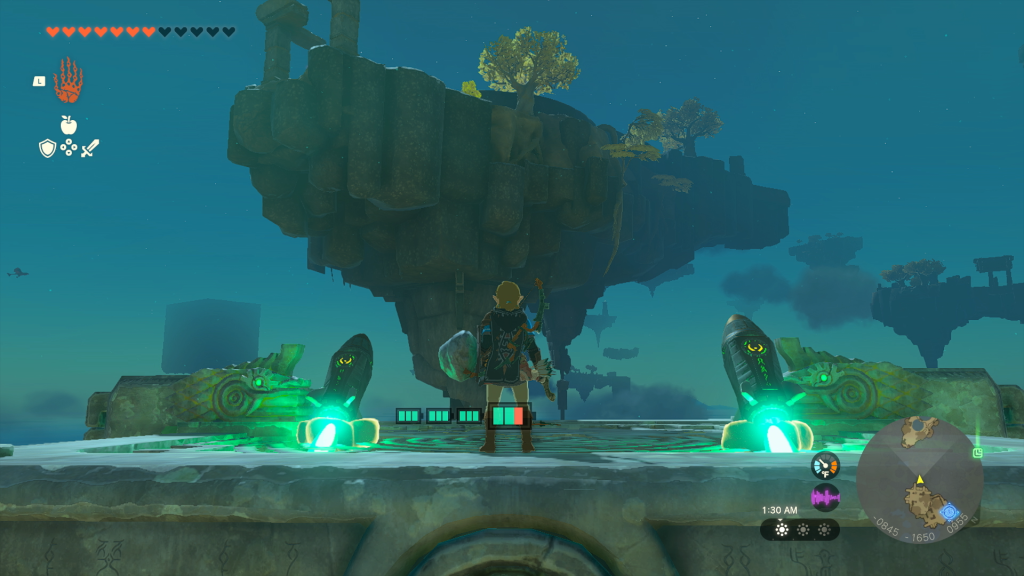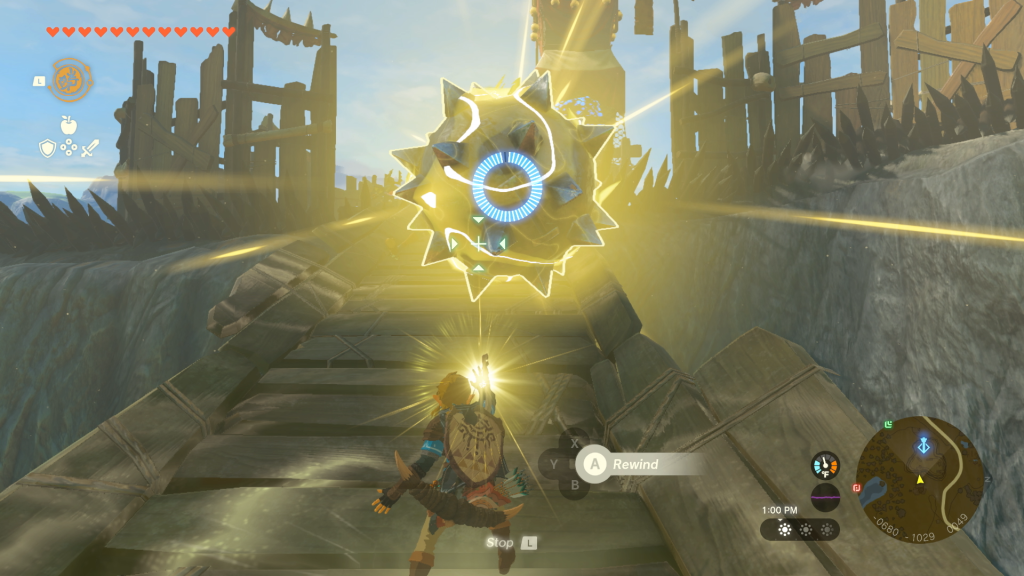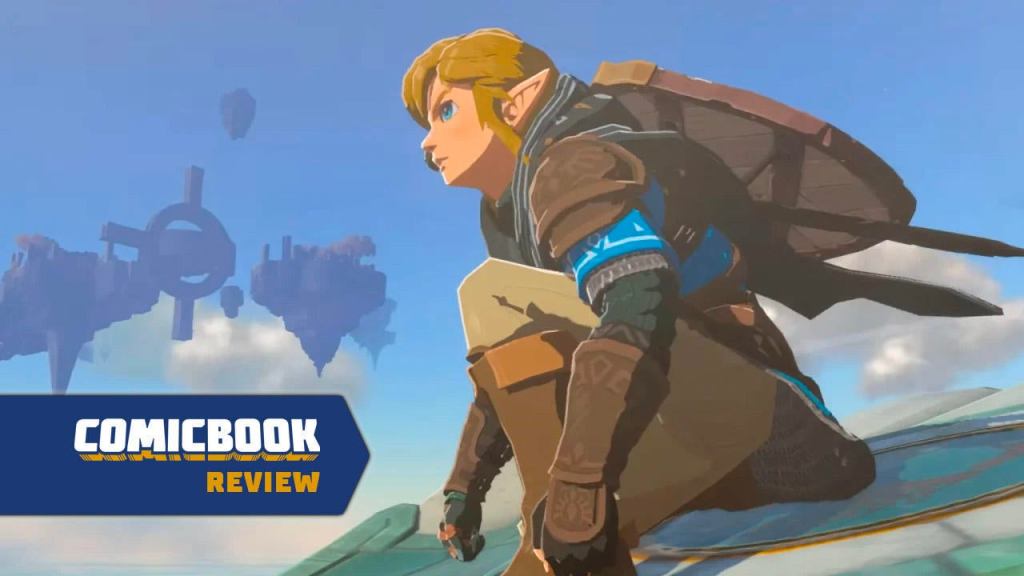The Legend of Zelda: Tears of the Kingdom is a remarkable and breathtaking experience that builds upon one of the best games ever made. With a deeper story and a more fully formed world, Tears of the Kingdom addresses some of the criticisms of The Legend of Zelda: Breath of the Wild while showcasing even more of this fantastic and unique version of Hyrule. Players will lose themselves in the sheer magnitude of Tears of the Kingdom and its surprising additions, while being encouraged to innovate using the new mechanics to find unique solutions to the many problems presented in the game.
Videos by ComicBook.com
Tears of the Kingdom is set a few years after Breath of the Wild, with Hyrule rebuilding after a hundred years of oppression at the hands of Calamity Ganon and his forces. At the outset of the game, Link and Zelda discover a mysterious Ganondorf imprisoned in the depths of Hyrule Castle, which leads to a devastating confrontation that leaves Link missing an arm and Zelda sent off to places unknown. Link is rescued by the mysterious spirit Rauru and given a handful of new abilities and is then sent off to explore a Hyrule changed by the “Upheaval” that has caused a series of sky islands to appear overhead and opened up a whole new world underneath Hyrule.
As someone who played through Breath of the Wild twice, Tears of the Kingdom doesn’t feel terribly different on its surface. The game engine, controls, and UI remain almost completely unchanged, including some of the more frustrating and time-consuming systems like the weapon degradation and cooking to replenish health. However, crafting has been expanded somewhat thanks to the addition of the Fuse ability – players can take the oftentimes basic sticks, staffs, and swords wielded by enemies and upgrade them using monster parts, providing a kind of weapon scaling that wasn’t present in the original game. There’s less need to hoard good weapons because weapons are much more readily available in the wild. Simply attach a high end monster part to a stick and you have a perfectly serviceable weapon that you can use to collect more weapons and parts.
The Fuse ability also opens combat a bit more by turning even mundane objects into potentially powerful tools. Equipping a spring box to my shield transformed it into a devastating counter to rushing foes, while equipping a mushroom to a large stick turned it into a springy bat that sent numerous enemies flying into a nearby ocean.

The other new mechanics are the Ascend, Recall, and Ultrahand abilities. Both Ascend and Recall are mostly situational abilities that offer new ways to solve puzzles and traverse through battles. Ultrahand is much more versatile, allowing players to toss crates and boards or build a variety of structures and vehicles that can be powered by Zonai tools like wheels, fans, or engines. These Zonai tools expend a type of stamina that can be upgraded over time and allow players to quickly move across terrain (or soar in the sky) to explore this new Hyrule even more.
The most impressive part of Tears of the Kingdom is how much Hyrule has grown over the last six years. In addition to the sky islands, Tears of the Kingdom also adds dozens of caves and wells along with an entirely new subterranean world that is essentially a second map. Even Hyrule itself has been drastically changed by the Upheaval, changing so much of the world that it sometimes feels like a totally different place than the first game. Landmarks from the first game have been marred by gloom or ruins falling from the sky, which encourages players to return to beloved haunts to see exactly what has changed. You don’t need to play Breath of the Wild to appreciate how much has changed from the previous game, but veterans will definitely get a leg up as they begin their second bout of exploration.
There are also a lot more variety in the monsters that now threaten Link, providing new challenges and making the world seem mucht more flavorful after a player has explored the map the first time. Even returning bosses have a new twist to them – there are new varieties of Talus, Hinox, and Lynels, all of which have even more ways to kill players than before. Perhaps most importantly, the game has proper dungeons now with unique themes and bosses that really provide a Zelda flavor missing from Breath of the Wild. The seemingly limitless mini-puzzles from Breath of the Wild also return, ranging from a whole new slate of shrines to even more Koroks populating the world than before. Like the enemies, the puzzles have a lot more variety. I loved that 30 hours into the game, I discovered yet another kind of Korok puzzle hiding in some corner of the world, and I’m assuming that I’ll discover even more as I keep exploring.
While exploration is obviously important in Tears of the Kingdom, I do feel like the game is a bit more focused with more hints and tools for players to take advantage of if they so choose. Characters mark spots on Link’s map for him to explore and useful check marks appear next to caves and cabins once they’ve been cleared out. Players don’t need to take advantage of these little guides, but it definitely streamlines the experience for those who don’t want to spend 200 hours stumbling over every little secret in the game. I think some of this streamlining is necessary, since there seems to be so much more to do in Tears of the Kingdom, players will need a bit more help keeping track of all of the challenges and items as they push their way to 100% completion.

In terms of the story, the core theme has also drastically changed from Breath of the Wild. There was a deliberate emptiness to Hyrule in Breath of the Wild, a sense of isolation that came from exploring a gorgeous but ruined world. In Tears of the Kingdom, that isolation has been replaced by a Hyrule in recovery, where the characters of the first game not only remember Link but are encouraged and inspired by Link’s actions and Zelda’s leadership during the period between games. Tears of the Kingdom reminds players consistently that Link has friends and that his quest to save Hyrule a second time is not a solitary task. We also see a lot more impact to Link’s actions as he completes the dozens of storylines found in Tears of the Kingdom. Population centers grow as Hyrule becomes a bit safer and the completion of some storylines allow others to progress. Watching the world of Hyrule evolve as Link makes his way through the game is another way that Tears of the Kingdom feels a little more structured than Breath of the Wild without sacrificing the open-world exploration that its predecessor was known for.
My biggest criticism of Tears of the Kingdom is that the sheer number of choices can be paralyzing at times and often encourages you to find the same solutions over and over. While you can Fuse almost anything to a weapon, it’s oftentimes easier to just pick the same old monster part or elemental fruit instead of getting innovative. And while the addition of recipes are appreciated, it still takes too much time to properly stockpile food in the game before making a significant trek into a dangerous terrain. These are relatively minor complaints though, and are piddly in comparison to the sheer amount of things to do and places to explore in the game.
The Legend of Zelda: Tears of the Kingdom is a worthy successor to Breath of the Wild and is easily a Game of the Year contender. In addition to making you fall in love with the world of Hyrule all over again, this game feels much more like a traditional Zelda game, while retaining all of the charm and beauty of Breath of the Wild. I loved the ways that Tears of the Kingdom builds on the previous game without feeling derivative or cash-grabby, with a story that feels deeper and more personal than before. While the new mechanics are fun, the true joy of Tears of the Kingdom comes in discovering all the secrets and all the wonder that Hyrule still has to offer. Get ready to lose yourself in Hyrule all over again. You’ll be spending plenty of time here.
Rating: 5 out of 5
The Legend of Zelda: Tears of the Kingdom is set to release May 12th, exclusively on Nintendo Switch. The game was provided by the publisher for the purpose of this review, and it was reviewed on a Nintendo Switch OLED.









